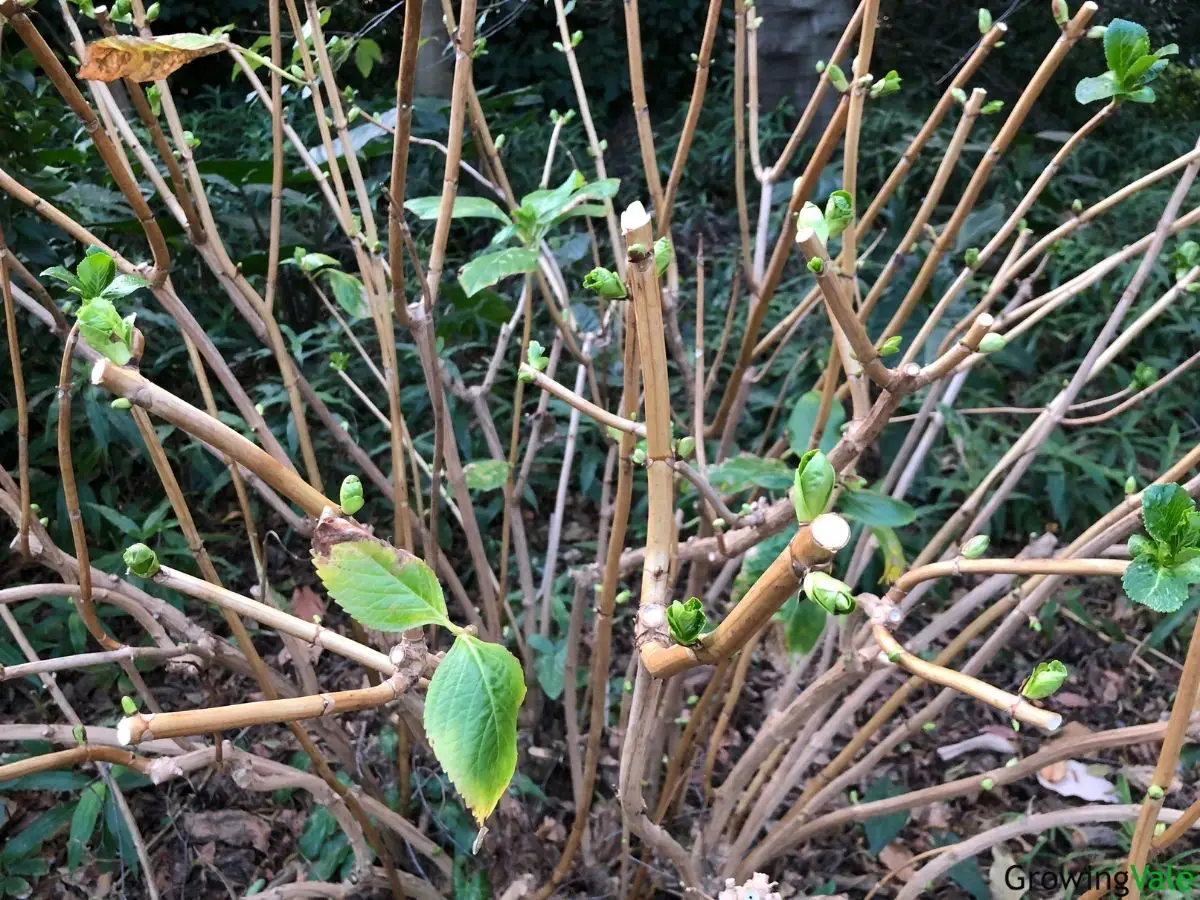Pruning, cutting back, and trimming are all different terms for the same thing, and it’s an important annual gardening task.
But it’s equally essential that you know what you are doing because if you just go ahead and hack your hydrangea, you may well end up next year with a nonflowering specimen. So because no one loves a hydrangea that doesn’t display its ostentatious summer floral display, you need to follow certain rules.
The rules to follow depend on the species of hydrangea shrubs.
When to Trim Hydrangeas

Pruning Mophead and Lacecap Hydrangea
The hydrangea group that includes the magnificent mophead hydrangeas and the delicate lacecaps are the bigleaf hydrangeas that are most commonly seen in gardens worldwide.
These hydrangea bushes will actually flower and thrive well without any pruning, but sometimes they just become too big or untidy and need cutting back. Regular pruning will also encourage new growth and flowering can be improved.
These hydrangea shrubs flower on old wood and new buds for the following year will start to form even whilst the current year’s flowers are still blooming.
Pruning hydrangeas that fall into this category need to be pruned immediately after the flowers have faded, and always before mid-August. Otherwise, there is a real risk that you will remove the following year’s flower buds with your pruning enthusiasm.
In colder climates, you may wish to leave the faded blooms on the hydrangea shrub to protect the tender new growth and the delicate new buds which are developing underneath. It is best to leave pruning until early in the spring, and make sure you only remove the dead flowers at this stage. With the arrival of spring, the new buds will have grown and therefore will be more visible.
Unless your hydrangea has really got out of control and needs severe cutting back, this is all you need to do.
If your plant is very neglected, then you can remove the oldest stems and cut them back to ground level. In the long term, this will restore the look and shape of the hydrangea bush, but you will lose the following year’s flowers.
Pruning Climbing Hydrangeas
A climbing hydrangea takes a few years to get established, but once it is settled and growing well, it will grow vigorously.
Like the bigleaf hydrangeas, a climbing hydrangea produces its flowers on the previous year’s wood. So, as with the mopheads, you need to cut away any dead or damaged wood from a climbing hydrangea immediately after flowering.
Other than this, only light pruning is required. It is sufficient just to keep the branches tidily growing against the fence or wall that is provided for support.
Pruning Panicle Hydrangea and Hydrangea Arborescens
Both these varieties will produce their flower buds on new growth, rather than on old wood of the previous year.
This means that the time of pruning is less critical, and there is less risk of accidentally removing new flower buds.
Both H. arborescens and H. paniculata require an annual prune. Pruning regularly will produce plants with an attractive form and habit. Failure to cut back hydrangeas will result in the plants growing taller, but with flowers only being produced at the top.
Pruning these hydrangea bushes is best done in the spring, and you should cut back to a pair of healthy buds on the stems.
What Happens If You Don’t Prune Hydrangeas?
Hydrangeas that aren’t regularly pruned will still continue to grow, thrive, and produce flowers. Many hydrangea shrubs will not come to any harm at all if pruning isn’t carried out. But, for the very best display, and the healthiest of hydrangea plants, regular pruning will yield positive results.

